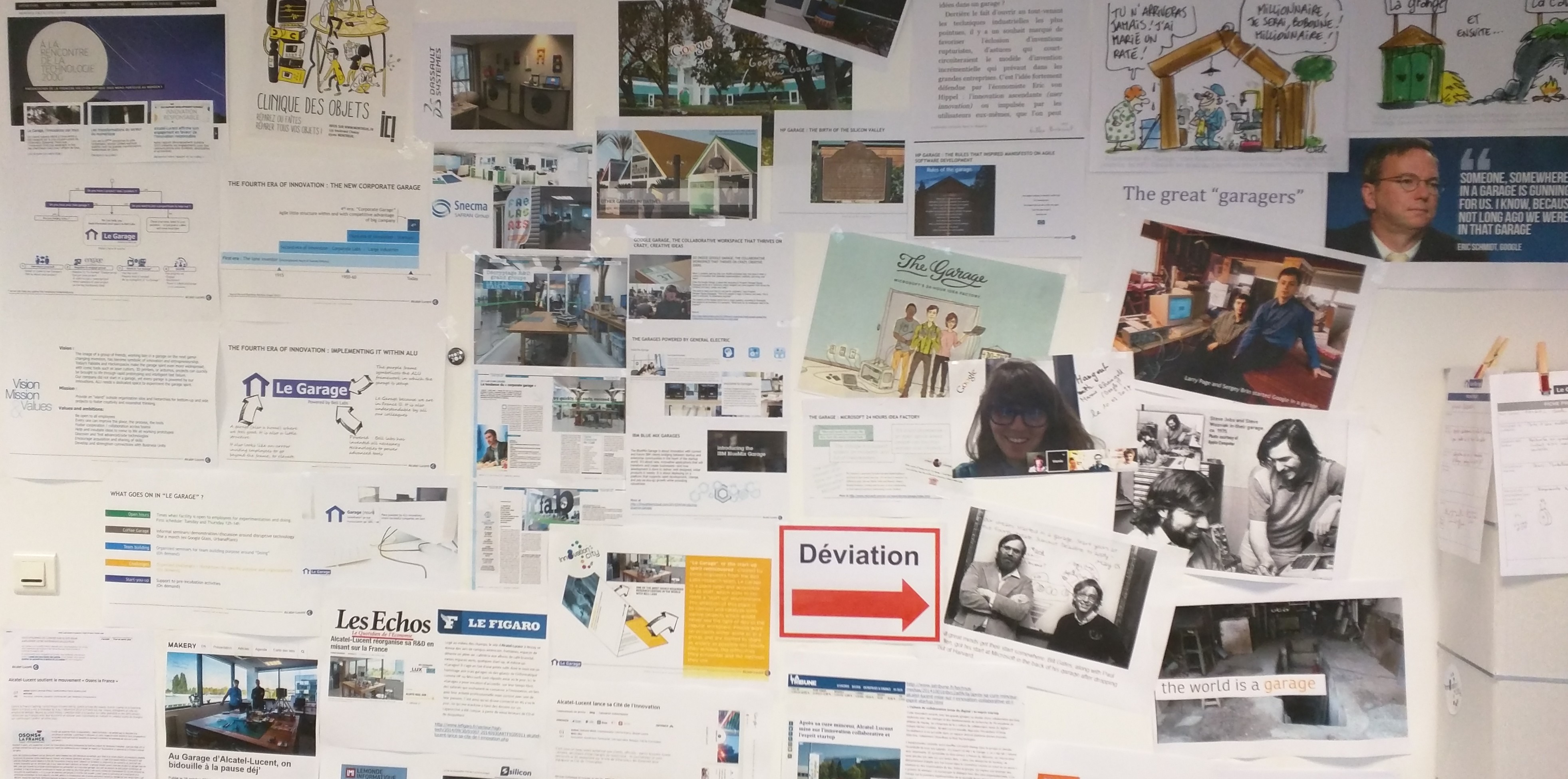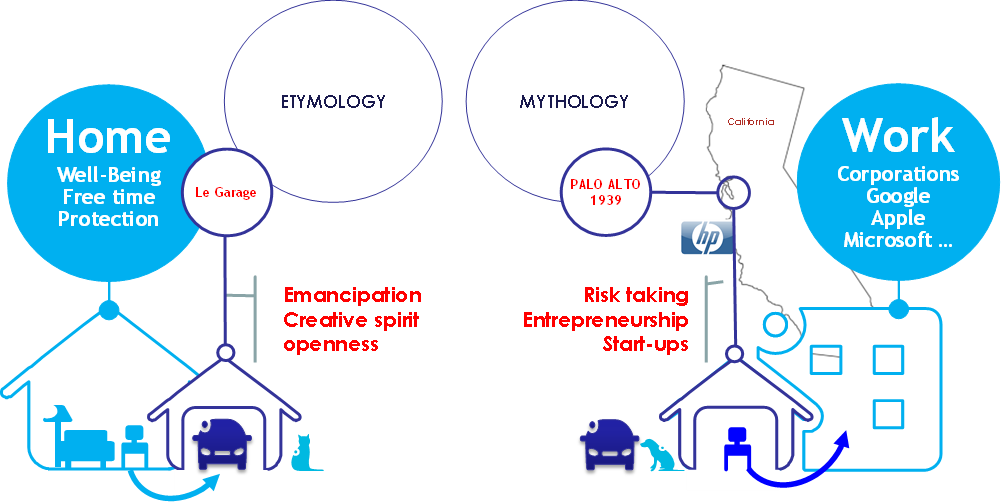
The Corporate Garage
The mission of the Corporate Garage is to provide innovators with superpowers to ideate, build, experiment, understand, or communicate. By giving access to an awesome pool of resources, the Corporate Garage should drastically shrink the distance between an idea and a working prototype, between an exploration project and a hypergrowth business.
The origins
At Nokia, the Nokia Garage implemented the Corporate Garage concept, cornered by the Harvard Business Review in their article “The New Corporate Garage”, explaining the historical 3 eras of Innovation and describing it as the foundation of the fourth era.

The word “Garage” holds 2 meanings:
Generally seen as the shelter for a parked car, the Garage is a transitional space linking the house to the outside world. It is also a happen space where one can make, repair or hack things, gather with some friends to play music.
For a lot of startups of the Silicon Valley though, the Garage represents the mythical place where successful companies are born. Paving the way for companies like Apple, Disney, Google, Amazon, or Tesla, all born in a garage, Hewlett-Packard is considered to be the very first company that was established in the valley, that’ swhy its garage has become an official landmark of the Silicon Valley history.
The Corporate Garage model mimics, with some obvious and necessary limits, the experience that entrepreneurs would have in a start-up.
As explained in the vision, the Nokia Garage concept relies on people’s passions, and the “Garage” perfectly bridges personal passions with professional ambitions
From idea to working prototype:
the Garage dimension in the Corporate Garage concept
There are three main categories to achieve the mission of a prototyping space.
Spaces
Space transmits culture. Environments can be used not just to represent cultural values but also to inspire them.
At Nokia, the initial Garage embraced three spaces with different functions.
- An open kitchen, where people can feel at home, gather for coffee or cooking, putting them in a relaxed state favorable to informal meetings, side discussions, and encounters working around organizational silos.
- An ideation space, where people work/brainstorm, stretch ideas to bring them to a level where they can be evaluated.
- A makerspace, where employees can experiment new technologies, and where ideas can be evaluated in the real world, through prototyping and testing, putting speed and experience before quality and theories.
Resources
Resources are essential to the Corporate Garage. They can be classified in two categories : Tools and skills
Tools are permanent assets : they may differ from location to location depending on the type of projects. The Fablab charter provides a thorough list of recommended tools.
Skills are bound to individuals, and define the perimeters of communities. The more skills within a community, the wider the range of domains that can be explored.
Operations
To engage a large community, several modes of operations can be considered:
- Garage Open House : regular event at predefined times where everyone can come in, meet, learn, initiate projects, get help, or help out. This mode promotes collaboration and serendipity to generate good surprises
- Team Building : initiated by team leaders, collaborative or competitive challenge inviting employees to overcome a given problem by making something together.
- Team/Project Support : counselling session, where partners, experts, designers or customers provide support, best practices and insights to a team or project.
- Training : dedicated or master class on a specific skill or method.
This simple, understandable, and yet efficient setup is a bias towards action, encouraging small starts, quick moves, low investments, visibility, building momentum along the way: the maker’s journey from ideas to working prototypes.
From exploration project to hypergrowth business :
The Corporate dimension in the Corporate Garage concept.
How to accelerate projects and consolidate business opportunities.
Internal incubation
With the right people, space, tools, and time, some projects can be incubated inside the company.
By hosting external startups in the same space, internal teams can further work with agility and daring, energized by the can-do/autonomous stance of startupers.
Incubated projects need a specific mentoring, as required by the velocity of execution and business construction. The difference the Nokia Garage makes for such projects is the immediate access to internal and external resources.
External incubation
Some projects can better benefit from an incubation in a dedicated structure, outside of the company.
Relying on independent incubators and accelerators who provide the necessary mentoring, production, and business support, those projects can progress faster in territories falling outside of the company’s strategy.
To support this scenario, the Nokia Garage needs to setup partnerships with such external entities, clarifying the framework to prevent issues related to Intellectual Property, project governance, or employee return policy.
Spin-off
For various divest reasons, some projects or products can be transferred to an independent company.
A business wishing to streamline its operations could for example transfer a mature business unit to better valuate it as an independent entity than as part of a larger business.
Another example could be to allow a team to create a new business, using some of the company’s assets. This option gives more independence to the team but comes with additional risks as well. Special arrangements can be made to acquire the value created by the spin-off or to reintegrate the team in the company.